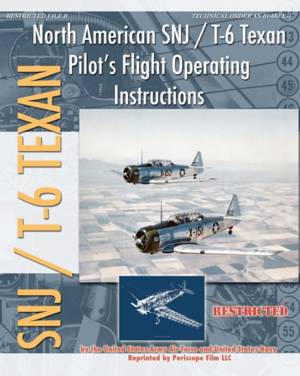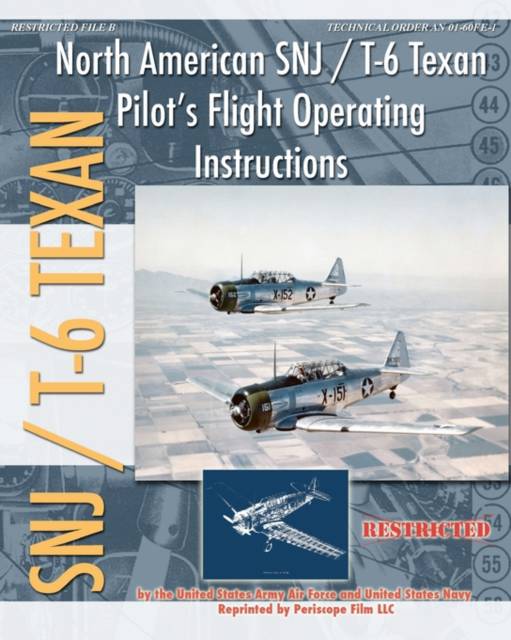
- Afhalen na 1 uur in een winkel met voorraad
- Gratis thuislevering in België vanaf € 30
- Ruim aanbod met 7 miljoen producten
- Afhalen na 1 uur in een winkel met voorraad
- Gratis thuislevering in België vanaf € 30
- Ruim aanbod met 7 miljoen producten
Zoeken
North American SNJ / T-6 Texan Pilot's Flight Operating Instructions
United States Navy, United States Army Air Forces
Paperback | Engels
€ 19,45
+ 38 punten
Omschrijving
Originally designated as the "advanced trainer" AT-6, North American's single-engine training aircraft was extensively used by the U.S. Army Air Forces, U.S. Navy (as the "SNJ"), Royal Air Force (as the "Harvard") and allied air forces during WWII. The prototype first flew in 1935, and by the time production ceased over 15,000 T-6s of all types were built. This included the AT-6B, which could hold a machine gun and was used for gunnery training, the AT-6G which offered a steerable tailwheel and advanced hydraulic system, and the Navy's SNJ-3C with arresting gear to permit carrier training. Aside from training duties T-6s saw service as forward air controllers, and served in combat on several occasions including for the French during the Algerian war. The T-6 remains a popular aircraft for Hollywood (in Tora! Tora! Tora! painted T-6s impersonated Japanese Zeros) and at air shows, where its throaty engine and classic "warbird" looks make it a crowd pleaser. This pilot's flight handbook dates from 1945, and features details on the AT-6C / SNJ-4 and Harvard IIA airplanes. Originally restricted, it was declassified long ago, and is reprinted here in its entirety.
Specificaties
Betrokkenen
- Auteur(s):
- Uitgeverij:
Inhoud
- Aantal bladzijden:
- 62
- Taal:
- Engels
Eigenschappen
- Productcode (EAN):
- 9781935700449
- Verschijningsdatum:
- 19/08/2010
- Uitvoering:
- Paperback
- Formaat:
- Trade paperback (VS)
- Afmetingen:
- 203 mm x 254 mm
- Gewicht:
- 140 g

Alleen bij Standaard Boekhandel
+ 38 punten op je klantenkaart van Standaard Boekhandel
Beoordelingen
We publiceren alleen reviews die voldoen aan de voorwaarden voor reviews. Bekijk onze voorwaarden voor reviews.








